
 MALCOLM X (1992) was a big fucking deal for Spike Lee. A big budget period historical drama, an epic really, that he had to fight to get hired on, and to finance, and to get permission to shoot in Mecca. And got recently freed Nelson Mandela to make a cameo in! It worked, and it was a phenomenon. So how the hell do you follow that up? He chose to make his most autobiographical film, though actually it’s more about his younger sister Joie, who gets a story credit and wrote the screenplay with Spike and their brother Cinqué.
MALCOLM X (1992) was a big fucking deal for Spike Lee. A big budget period historical drama, an epic really, that he had to fight to get hired on, and to finance, and to get permission to shoot in Mecca. And got recently freed Nelson Mandela to make a cameo in! It worked, and it was a phenomenon. So how the hell do you follow that up? He chose to make his most autobiographical film, though actually it’s more about his younger sister Joie, who gets a story credit and wrote the screenplay with Spike and their brother Cinqué.
So on May 13th, 1994, three days after Mandela was inaugurated as the first president of free South Africa, CROOKLYN came out, did pretty good, came in third after THE CROW and WHEN A MAN LOVES A WOMAN. Probly felt a little anticlimactic for Spike. But it’s a great movie.
Lee still had editor Barry Alexander Brown, production designer Wynn Thomas, and costume designer Ruth E. Carter, so there’s a continuity with his earlier movies. But Ernest Dickerson, the director of photography for everything since his student film Joe’s Bed-Stuy Barbershop: We Cut Heads, had retired from cinematography to direct JUICE and SURVIVING THE GAME. Those were big shoes to fill. So Lee hooked up with Arthur Jafa, a Howard-educated video artist who had been married to Julie Dash and was d.p. for her DAUGHTERS OF THE DUST.
CROOKLYN is set in 1973 and it’s about the Carmichael family who own a brownstone in Bed-Stuy. Nine-year-old Troy (Zelda Harris, who had been on Sesame Street) has four brothers including the clearly very Spike-like Clinton (Carlton Williams), who’s obsessed with the Knicks and likes to walk by and smack her in the head for no reason. Her mother Carolyn (Alfre Woodard, FREEDOM ROAD) is a school teacher who really looks after the kids but also is quick to yell at them, spank them and threaten them, so they’re all more fond of their peacemaking, ice cream buying dad Woody (Delroy Lindo, MORE AMERICAN GRAFFITI). He’s a jazz pianist who refuses to adjust his playing with the times. Carolyn thinks he’s not doing his fair share financially or in disciplining the kids.
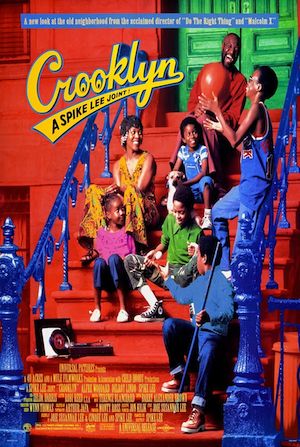 The story takes place over the summer, and it’s very incidental, it seems like a succession of childhood memories, which is probly pretty much what it is. There’s a powerful nostalgia to it, as if the Lee siblings were filling up a journal page with things they used to love; montages catalog children’s street games – jump roping, racing, hopscotch, riding bikes, rolling in cardboard boxes, blowing bubbles, bouncing balls, eating candy, Rock ‘em Sock ‘em Robots, spinning tops, balsa wood airplanes, red light green light, stick ball, and a bunch of other games too before-my-time to identify.
The story takes place over the summer, and it’s very incidental, it seems like a succession of childhood memories, which is probly pretty much what it is. There’s a powerful nostalgia to it, as if the Lee siblings were filling up a journal page with things they used to love; montages catalog children’s street games – jump roping, racing, hopscotch, riding bikes, rolling in cardboard boxes, blowing bubbles, bouncing balls, eating candy, Rock ‘em Sock ‘em Robots, spinning tops, balsa wood airplanes, red light green light, stick ball, and a bunch of other games too before-my-time to identify.
We see Troy getting into all kinds of neighborhood fights, eating Trix out of the box, getting caught shoplifting chips from the bodega, experimenting with stuffing her bra after her brother called her “evil flat-chested wench,” watching Snagglepluss and Soul Train, singing along to the “Afro Sheen” commercial, peeing on the boys’ floor while sleepwalking, stealing Clinton’s collection of rare buffalo nickels to buy ice cream cones, being angry and embarrassed when mom sends her to the store with food stamps. We see Woody pouring half a bag of sugar in the lemonade, Nate (Chris Knowings, later an adult on Sesame Street) refusing to eat his black eyed peas, the family going on a road trip, getting mad at Dad for singing the same song over and over. The kids are always knocking each other around, bickering and yelling at each other, Troy yelling “STOOPID!” and “IDIOT!” It’s a movie full of life.
They have opinions about their different neighbors. They all think Vic (Isaiah Washington, STRICTLY BUSINESS), the Vietnam vet who lives upstairs, is the coolest guy in the world. But they hate Tony Eyes (David Patrick Kelly, THE WARRIORS, also in THE CROW, released the same day), the weird Jimmy-the-cab-driver looking white dude next door, who has too many dogs to take care of. After seeing an adult, Tommy La La (José Zúñiga, FRESH) talk shit about Tony and throw a bottle at his door, Wendell (Sharif Rashed, BLUE IN THE FACE) follows his lead and starts dumping garbage there. When Tony flips out about it he seems so crazy that Carolyn assumes he’s lying and takes the kids’ side. This is such a true-to-life kid story, I bet something like this really happened and in retrospect Joie felt sorry for the guy.
One of the dreamiest parts of the movie is when Troy goes to the bodega and stares at a short man dancing in the aisles with RuPaul, then comes home just as police drag Vic out of the building for punching Tony while trying to break up the fight the kids started with him. Vic sees Troy and they make long eye contact before he gets in the police car. It’s a heavy moment she’ll remember forever even though at the time she goes inside and forgets about it while she lords over her brothers with the box of Lemonheads she bought.
Woody gets temporarily kicked out of the house after accidentally hurting Carolyn dragging her away from the kids in a fight over watching TV. He honestly seems innocent in that part but his focus on the fact that the squabble interupted him playing piano – he yells for silence to dramatically declare “What I want. Is some respect. For my work. In this. House.” – really gets him in the doghouse. The kids are excited to see Uncle Brown (Vondie Curtis-Hall, MYSTERY TRAIN, DIE HARD 2, ONE GOOD COP) come pick up Dad, they give him a hug goodbye, they take care of Mom like she’s sick, but Troy is happy to secretly visit with Dad and deliver his apology.
The marriage troubles are directly related to the money troubles. Woody can’t or doesn’t keep up on payments, the electricity gets turned off in the building, he lights the building with candles and tries to spin it as kinda nice. Nobody’s buying it, especially the tenants, yet you can see from the candle light family dinner scene that it is pretty nice in the memories of the Lee siblings.
Woody stubbornly insists on being what Carolyn calls “a pure musician, playing pure music.” He asks her, “What do you want me to do, pick up a guitar and play some rock ’n roll?” and she says yes, if it pays the electric bill. He starts talking about how he set up a solo concert, insisting that “People are gonna come to this concert. People still wanna hear good music.” Shadow Henderson, Wesley Snipes’ character in MO’ BETTER BLUES, would’ve told him “The people don’t come because you grandiose motherfuckers don’t play shit that they like,” and he would’ve been right. When the concert happens it looks like a school recital. It’s in some auditorium, like a gym, with just a few friends and family there. Kinda pathetic and sad and also I relate, I get it, I respect it.
There is one absolutely crazy directorial choice Lee makes in this movie, and I understand why some people hate it. When Troy goes to Virginia to spend part of the summer with Aunt Song (Frances Foster, CITIZEN COHN), Uncle Clem (Norman Matlock, TAXI DRIVER) and cousin Viola (Patriece Nelson), Lee shoots with an anamorphic lens even though the movie is projected non-anamorphic, so all of these scenes are squeezed and look completely bizarre. At the time it almost seemed like a projection error, and on blu-ray it doesn’t seem any more normal. But the purpose is clear: this is an alien world to Troy, she’s never been outside of the city, or been in a house like this, or seen so many white dolls, so everything feels off. But it’s hard to look at. It hurts my eyes. And I feel sorry for Nelson, who plays Viola, because her only acting credit is being in this great movie as a teenager, but she’s never seen looking normal, only horribly distorted!
But as it continues my eyes adjust, I can translate it, it starts to be less distracting, and I get caught up in the very accurate depiction of childhood feelings, being stuck in this place that makes no sense to her, missing her home and family, kinda hating Aunt Song and her “little rat dog” Queenie, but becoming sudden BFFs with Viola. Then she gets a letter from Mom, so we see Carolyn back home talking about what everybody’s up to, and it’s not anamorphic anymore. It’s jarring to go back and forth – there’s this overwhelming “thank God, we’re back home” feeling. And then when Troy actually gets back and we switch permanently out of the anamorphic it really captures that feeling of being away from home for what seems forever, coming back and seeing it with different eyes. She’s noticing trees being different and stuff. Wondering what she missed. So I think the gimmick is actually very effective.
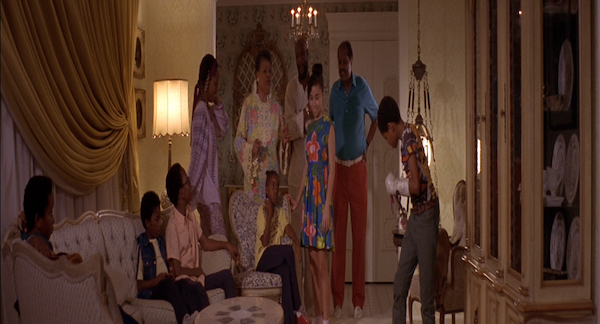
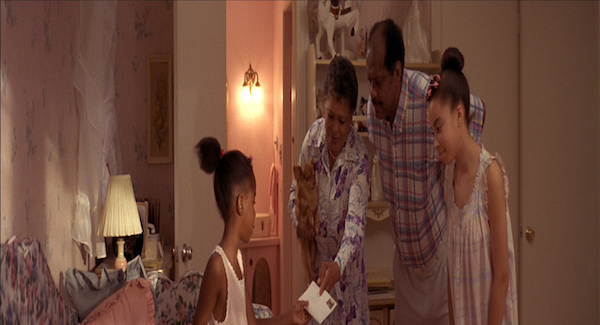
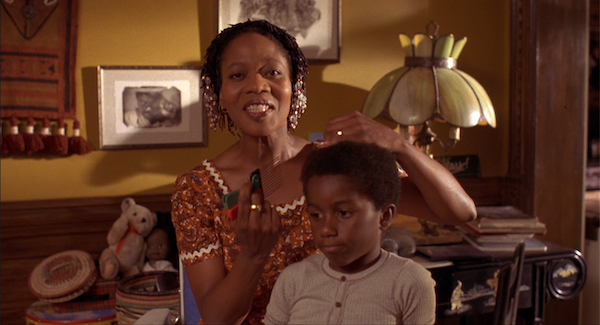
If CROOKLYN is Troy looking back on a summer, there must be a reason why she thought about this specific one, and yep, it’s because something terrible happens. I remembered that (SPOILER) Carolyn dies suddenly of cancer, and that it’s very sad. And I knew it would probly be sadder watching it for the first time as someone who’s lost his mom instead of someone who thinks that would be sad. But it actually hit me way harder than I expected, for a couple different reasons. I have another family member who’s sick right now, so that’s very raw. I’m older and married and identify more with Woody than I used to; maybe the most heartbreaking moment is the look on his face in the hospital, looking out the window and contemplating what this may mean and what sort of life he will have without her. But I think the main reason it wrecked me is how perfectly the storytelling mimics the way we remember things. The whole ordeal is told in a few scenes – Troy coming back from Virginia and visiting her mom in the hospital, then things are normal a bit until Dad gathers the kids to tell them that Mom has cancer and is going to the hospital but she’ll be out soon, followed by a montage of the house seeming empty, followed by the kids getting ready for the funeral, more focused on what they have to wear than anything else. It could play out like it’s trying to explain everything that happened, instead it’s an impression created by a couple of specific incidents, the way important events start to become in our memories. The story becomes the parts that stick with us most, the connective tissue fading away.
Man, at the reception at the house afterwards, where Clinton and Troy are sitting silently on the couch, he moves over next to her and holds her hand, the only time in the movie we see him go into good big brother mode. Just typing it is making me cry. And somehow it works that it goes right into the goofiest scene in the movie, when little Joseph (Tse-Mach Washington) runs in in his ‘70s funeral suit and wide collar, crying about the neighborhood glue sniffers stealing his money, the theme from SHAFT plays and Troy goes out using the trademark Spike Lee floating shot to whack Spike Lee himself (playing Snuffy) on the head with a stick.

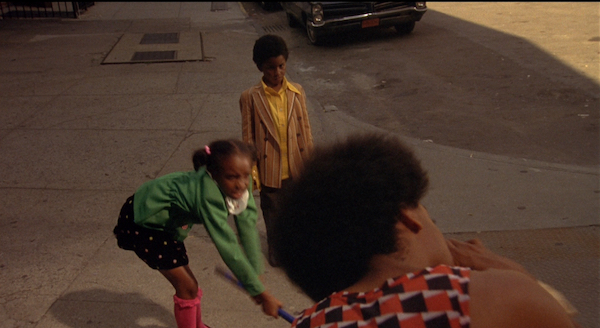
And then the scene after that is Troy waking up to the sounds of Dad trying to catch a rat under the oven, and coming downstairs thinking it’s Mom and Dad fighting. Oh, poor Woody. For me this was the movie that really cemented Alfre Woodard and Delroy Lindo as greats, playing these flawed, complex people who you absolutely love. Like real parents.
Before I go I gotta mention the music. The contrast of the nearly wall-to-wall soul hits and the score by Terence Blanchard creates a distinctly Spike Lee tone, but also reflects the conflict between the rhythms the move the kids and the aspirations of their jazz snob dad. There’s so much music they released the soundtrack in two volumes. It’s mostly a nostalgic greatest hits collection – The Jackson 5, Sly and the Family Stone, The Staples Singers, The Persuaders, Johnny Nash, The Chi-Lites (“garbage” according to Woody), The Spinners, Joe Cuba, The Five Stairsteps, and a great use of “People Make the World Go Round” by the Stylistics over the opening title sequence. Also you got the songs the kids hear from watching TV – I love the scene where they all sing along with “I Woke Up in Love This Morning” on The Partridge Family. Mom yells from downstairs that they better not be watching TV so they turn it down and continue singing in a whisper.
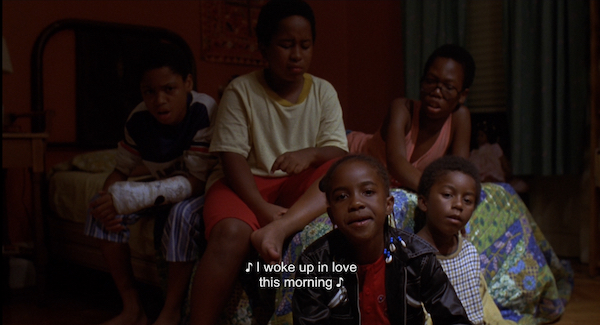
Man, this is a beautiful movie. The kids, especially Harris, are so natural and so funny in the way that real kids are funny. It looks gorgeous, the music is great, it has such a warm feeling of “those were the good old days” even while confronting some of the most painful things in life and trying to make peace with them. I don’t know how many would agree with me on this, but I think it ranks high in Spike Lee’s great jointography. And it’s definitely one of the best 1994 movies I’ll be watching this summer. Thank you for sharing your childhood with us Spike, Joie and Cinqué.
additional notes:
1. Can we take a moment to honor the fact that Lee’s posters in this era had their own totally unique style, not the same as the movies but the same as each other? CROOKLYN’s perfectly red stoop with blue handrails and green doors is clearly the same universe as DO THE RIGHT THING’s ocean blue concrete. Art Sims (of the firm 11:24 Design) did most of Lee’s posters starting with SCHOOL DAZE. He also did THE COLOR PURPLE, NEW JACK CITY, BLACK DYNAMITE, and BLACK PANTHER, plus album covers including Johnny Guitar Watson’s Strike on Computers.
2. I gotta mention the parallels to Matty Rich’s THE INKWELL, released just three weeks earlier. THE INKWELL takes place in the summer of ’76, CROOKLYN in the summer of ’73. In THE INKWELL the main character is a 16 year old boy who leaves upstate New York to stay with family in Martha’s Vineyard. In CROOKLYN it’s a 9 year old girl leaving Brooklyn for Virginia. In THE INKWELL his therapist braids his hair for the first time and it kind of helps him grow up, in CROOKLYN her mom’s cousin takes her braids out because of cultural ignorance. Both movies are scored by Terence Blanchard and also have a bunch of classic soul hits (though THE INKWELL limits itself to BT Express songs).
3. Later in the summer we’ll be seeing a more fantastical version of a nostalgic period piece from Robert Zemeckis, who is five years older than Lee. His soundtrack is a double-CD instead of two volumes sold separately. It’s funny to see how different they are, but there’s one overlap: both use Jimi Hendrix’s “Hey Joe.”
4. The Carmichael residence is a real brownstone in Bed-Stuy. Since the making of the film it has been sold for $1.7 million, restored to look all fancy-pants, used at as a bed and breakfast, and sold again last year for over $4.1 million, a neighborhood per-square-foot record. I have never owned a home myself but I do still have my CROOKLYN movie poster.

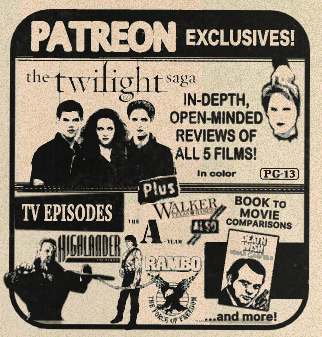

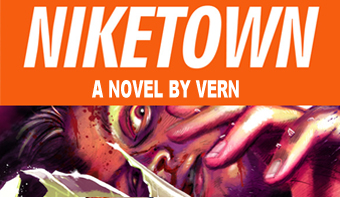
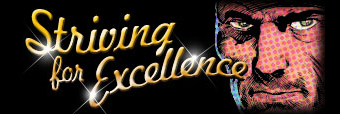
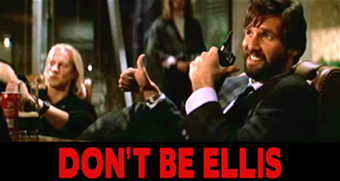

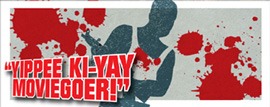








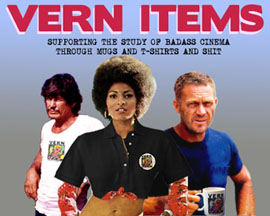
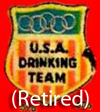
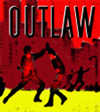







May 13th, 2024 at 8:39 am
I don’t think I ever actually saw CROOKLYN, but its legacy is secure because it inspired two of the greatest hip-hop songs of all time, first the actual theme song, “Crooklyn,” and then its sequel, “The Return of the Crooklyn Dodgers” from the CLOCKERS soundtrack. I have also never seen CLOCKERS, but me and my boy wore out both those cassingles driving around suburban Connecticut back in the day. The 90s, as I’ve mentioned before, was the golden age of great hip-hop soundtracks for movies may or may not have seen: HIGH SCHOOL HIGH, NEW JERSEY DRIVE, ABOVE THE RIM, GRIDLOCK’D, TALES FROM THE HOOD (though I think I did see that one eventually)…the list goes on. The talent was so deep back then that any random assortment of cast-off tracks was likely to be at least 80% bangers.
The odds of these links working is negligible but fuck it, I’m trying anyway. These songs need to be rediscovered. This is what *my* summers sounded like.
https://www.youtube.com/watch?v=a2pzmty3LVs
https://www.youtube.com/watch?v=UtfBFG1hgps